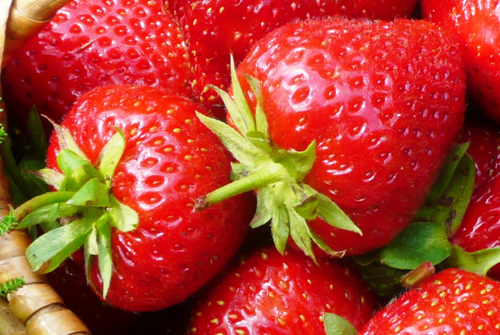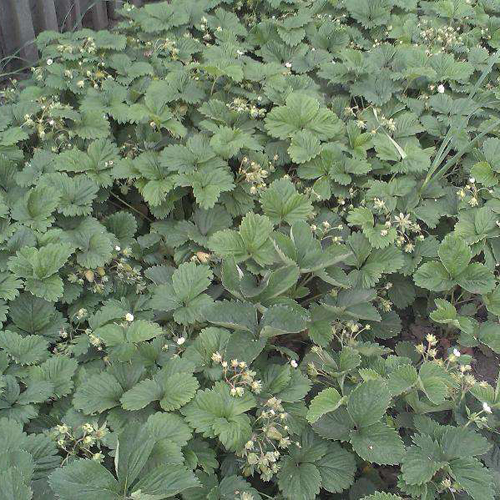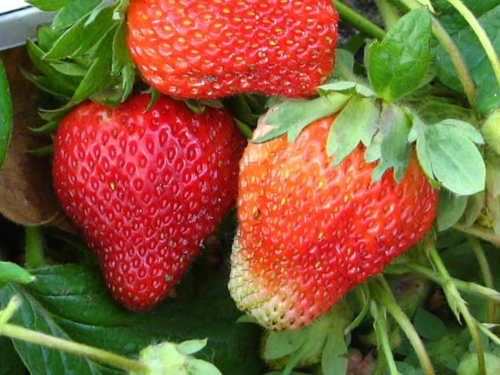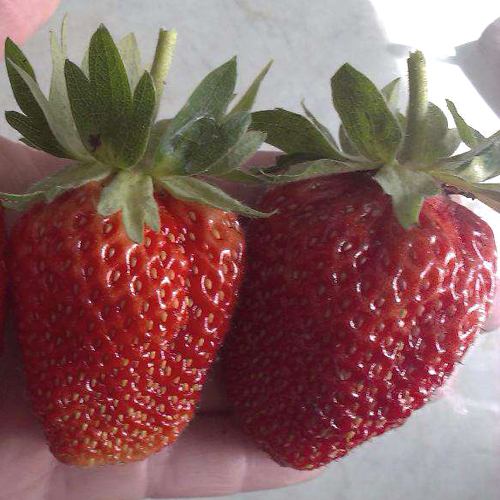Marshal strawberry variety
Marshal is one of the oldest non-renovated varieties of garden strawberries (strawberries) of the mid-early ripening period, which is still actively cultivated. It was bred back in the distant 1890th year in Massachusetts (USA), the author is Marshall F. Yuell. Despite its decent age, the variety is very popular and is considered one of the best. This strawberry attracts the attention of gardeners with its unpretentiousness, good yield, excellent taste of berries, as well as the ability to calmly endure various weather disasters. The Marshal is recommended for cultivation in personal subsidiary plots; for commercial purposes, its cultivation is currently not relevant. Due to its plasticity, the variety can grow in a wide variety of climatic latitudes.

The plant is powerful, vigorous, about 20 cm high, spreading, abundantly leafy, the bushes look very voluminous, take up quite a lot of space. The root system is powerful. Strawberries form an abundant amount of whiskers, one might even say excessive. The leaves are large, strongly corrugated, bright green in color. Petioles are high, erect, thick, with slight pubescence. The flowers are bisexual. The peduncles of the variety are tall, erect, laid on the ground under the weight of the fruits. Marshal's bushes are often very easy to identify - no berries are visible on them. The fact is that the plant is really very voluminous, it quickly grows green mass, while the crop is hiding under the leaves. On the one hand, this is good - the fruits are not baked in the sun, do not attract birds. On the other hand, everything is not so simple - if the humidity level is high, there is a high probability of fruit rot and the appearance of various fungal diseases. But at the same time there is an absolutely positive point - due to the bulk of the strawberry bushes, weeding will not cause much trouble, and sometimes it is possible to do without it at all.
Marshal's berries are large and very large, very heterogeneous in shape, but wide-conical, slightly flattened on the sides prevails. The largest specimens can be comb-shaped, double fruits are often observed. The skin is bright red with a glossy sheen. Achenes are yellow, superficial. The pulp is light red in color, juicy, medium-dense, rather loose and fleshy, with a pronounced strawberry aroma. No cavities are formed inside the fetus.

The taste of the variety is excellent! The taste is sweet and sour, one might say "classic", reminiscent of "grandmother's" strawberries - soft, juicy, crumbly berry with a magnificent strawberry aroma, very sweet, but with a pronounced piquant sourness. However, not everything is so rosy. According to gardeners, the taste of Marshal's fruits is highly dependent on the weather conditions of the season and agricultural technology, and it is often more sour than sweet. But the problem, in principle, can be solved by competent plant care. Gardeners also noticed that the variety gains the best flavor palette when fully ripe, and unripe fruits can be either too sour or completely insipid. The berries are versatile in use, excellent fresh, suitable for making jams, jams, will be an excellent addition to desserts. But they are not particularly suitable for freezing - they are too soft and juicy.
The fruits, due to their loose pulp, are unsuitable for transportation, which makes the Marshal absolutely unsuitable for growing commercially. Strawberries wrinkle during transportation, release juice, as a result of which they lose their presentation. But it cannot be called completely non-transportable - after all, you will successfully take it from the garden to the house, but no more. On the other hand, there are those gardeners who say that the berries are quite transportable and are great for selling on the market.In fact, this contradiction can be explained by a banal confusion - the Marshal may simply turn out to be a different variety, so to speak, "slipped" to a gullible gardener by an unscrupulous seller. But we'll talk about this a little later.

The berries of our hero are really large, the average weight in the season is about 30 grams. The first fruits are much larger, about 50 grams, sometimes giants weighing up to 100 grams grow. Ripening of strawberries begins around the first decade of June, but in different climatic latitudes it can start both earlier and later. Fruiting of the variety is stable, the berries, of course, become smaller by the end of the season, but they still remain very large, at least 20 grams, subject to good care. The yield is quite high for such an "old man" - up to a kilogram of berries from a bush. But it should be said that this indicator is the maximum, which is not always achievable. Even many modern varieties are unable to produce such results with moderate agricultural technology, let alone Marshal. Thus, in order to achieve a high level of yield, you need to very painstakingly care for strawberries: provide them with the necessary nutrition and regular watering, treat them from diseases and pests, and protect them from the harmful effects of very high or extremely low temperatures.
According to the observations of gardeners, our hero has a rather weak immunity, is inclined to be affected by fungal diseases, rot, spots, pests also love him very much. In a word, you cannot do without high-quality prevention if you want to get abundant tasty harvests. But Marshal can safely boast of resistance to various climatic adversities. It is very drought-resistant and heat-resistant; in the hottest seasons, its yield remains at a high level. In addition, the berries in such conditions become sweeter, while their size does not decrease very much. But during rainy periods, serious problems can arise - as already mentioned, the berries are hidden under the foliage, and in conditions of high humidity, the strawberry crop may simply rot, and the likelihood of fungal diseases increases and the taste of the fruit may deteriorate.

Winter hardiness and frost resistance of the variety are at a high level. It perfectly tolerates even the most severe winter frosts and severe spring frosts. But the flowers can freeze slightly, however, in most regions, flowering starts after a stable above-zero temperature is established. Still, it should be said that good cover for plants will not hurt in any case, especially in the northern regions with a cold climate.
In agricultural technology, Marshal is absolutely simple, and in terms of care he, in principle, is unpretentious. It can even be attributed to the “planted and forgotten” group of varieties - even with the most minimal care, strawberries feel great and bear fruit at a very decent level. But sending the plant, so to speak, in free swimming can be fraught with disappointment. As already mentioned, the taste of berries is highly dependent on agricultural technology and weather conditions. Do not forget about watering, but do not overmoisten the soil, feed the plantings as needed, watch the number of whiskers. The last point deserves special attention. The variety is very abundant, and if you do not follow this, you can not hope for large, high-quality berries. Whiskers take over a significant part of the nutrition to the detriment of the harvest, so they must be removed in a timely manner.
There is one more very important agrotechnical nuance. When planting, you need to take into account the size of the plant, so you need to plant strawberry bushes at a distance of at least 40 cm from each other, and if possible, more space. But the chores don't end there.Marshal very quickly builds up abundant green mass, so it is advisable sometimes to thin out the leaves in order to improve ventilation of the bush and increase the access of sunlight. This activity will also to some extent help reduce the risk of fungal diseases and berry rotting. Don't forget to sanitize as well. One of the most important points is regular treatment for various diseases and pests. On the other hand, some gardeners neglect this exercise, and strawberries are doing quite well. In a word, carry out processing as needed, but it is better not to completely forget about them.
One of the main advantages of the Marshal is longevity. This item is currently very much appreciated, since the vast majority of modern high-yielding varieties do not withstand use for more than two years, and often develop their resource in just a year. Our hero can bear fruit well for more than 5 years, and according to some sources, up to 10 years. It should still be understood that the yield gradually decreases with each year of the plant's life, therefore, using the plantation for 10 years without renewal is a very controversial decision. In principle, strawberries can withstand 7 years of cultivation and are able to delight with a fairly abundant tasty harvest.
It's time to talk about one very serious nuance. Since the variety is really old, chances are good that you will buy something completely different from what you wanted. Be careful when choosing seedlings, buy only from trusted sellers with a good reputation. In general, it is very rare that such "old man" varieties are preserved to this day. Thus, one very interesting question arises - does the same Marshal currently exist, with a specific set of varietal traits and genetic characteristics? In short, be extremely careful when purchasing planting material.
What I would like to say at the end. Over the very long years of its existence, this strawberry has managed to prove more than once that it is really very good. It is very fruitful, has excellent taste, is rather unpretentious, and can adapt to a wide variety of growing conditions. In the list of disadvantages, one can note the unsuitability for transportation, poor resistance to diseases, and, of course, relatively low yield indicators. Currently, Marshal can no longer confidently compete with modern popular varieties, although he cannot be called far behind them. But still, in commercial terms, our hero is not particularly promising, but for a summer cottage it is very attractive.









My favorite variety! I planted it at home 5 years ago and still cannot find it better than him. Depending on the spring, it ripens in early or mid-June. The first berries are simply huge, of amazing taste, not dense, with a void in the center. They can be eaten even slightly unripe, they are already very tasty. Children are among the first to eat them. But there is also one significant disadvantage - it gives a lot of mustache. I like the bushes to grow freely, and if they are not removed, then in a year there will be continuous thickets. Therefore, two times a season you have to deal with this harmful mustache. She simply has no other disadvantages. And other newfangled varieties cannot be compared with it in terms of yield and taste.